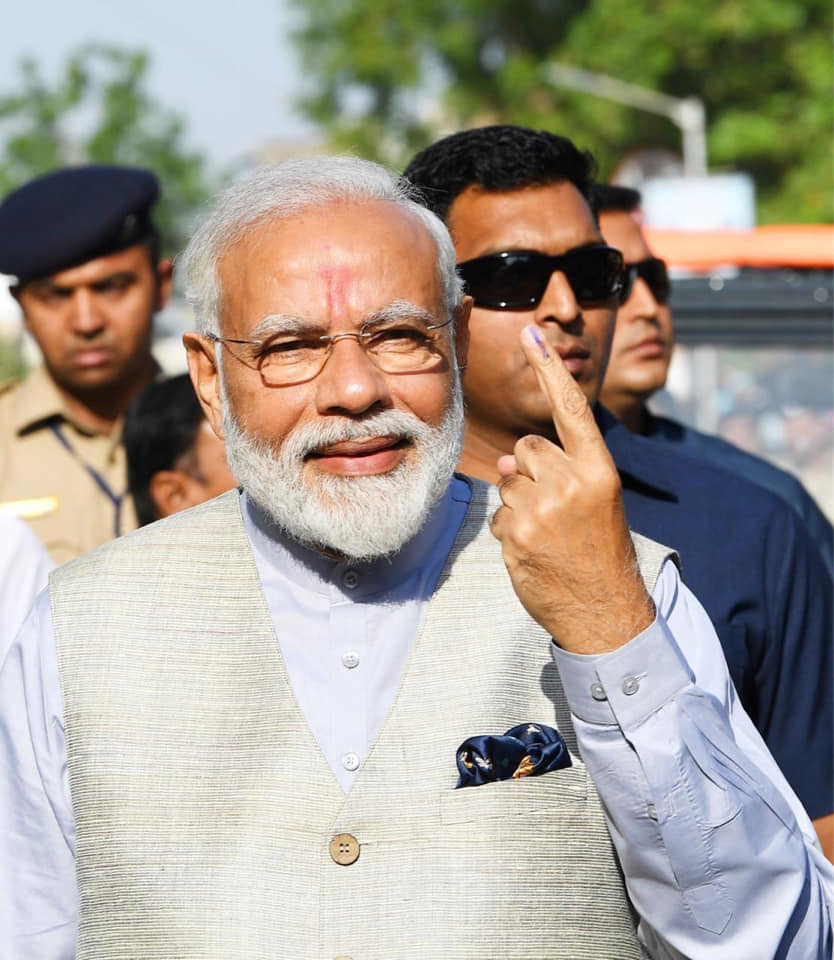
NEW DELHI — Indian Prime Minister Narendra Modi and his party had a commanding lead as votes were counted Thursday after a six-week general election, sending the stock market soaring in anticipation of another five-year term for the Hindu nationalist leader.
Election Commission data by late morning showed the Bharatiya Janata Party leading in contests for 300 out of 542 seats in the lower house of Parliament, with its main rival, the Indian National Congress, ahead in 50 contests.
The data didn’t indicate what percentage of the estimated 600 million votes had been counted. The final tally was expected by Thursday evening at the earliest.
The election has been seen as a referendum on Modi, whose economic reforms have had mixed results but whose popularity as a social underdog in India’s highly stratified society has endured. Critics have said his Hindu-first platform risks exacerbating social tensions in the country of 1.3 billion people.
On the campaign trail, Modi presented himself as a self-made man with the confidence to cut red tape and unleash India’s economic potential, and labeled Congress party president Rahul Gandhi, the scion of a political dynasty that lost power in 2014, as an out-of-touch elite.
Half a dozen exit polls released after voting concluded Sunday showed Modi and the Bharatiya Janata Party winning. A party or coalition needs a simple majority of 272 seats, or just over half the seats in Parliament’s lower house, to govern.
If BJP’s lead holds, it won’t need a coalition partner to stay in power.
“Mr. Modi’s going to be the next prime minister, we are very assured of that,” said Meenakshi Lekhi, a member of Parliament running for re-election in New Delhi.
By midmorning, India’s Sensex had jumped 2.3% to an all-time high over 40,000.
Outside BJP headquarters in New Delhi, hundreds of people cheered and shouted party slogans, lifting cardboard cut-outs of Modi and BJP President Amit Shah into the air as other people played drums and set off fireworks.
Mohit Sharma, a 29-year-old who runs a bathroom fittings business, said India had never had a prime minister like Modi.
“In the past, when leaders after they won elections, they sat in air-conditioned rooms and they never reached out to people, but Modi was never like that. He was always connected to the people through social media,” Sharma said.
Fashion designer Sandeep Verma, 39, said he wasn’t a BJP supporter but had voted for the party in the elections.
“A country like India needs a decisive leader and the people did not find that in Rahul Gandhi. There was no alternative to Modi,” Verma said.
The BJP harnessed social media, including Twitter, where Modi has 47.4 million followers, and WhatsApp to reach out to millions of supporters.
Meanwhile, at Congress headquarters, only a few party workers stood outside looking dejected.
Jagdish Sharma, 50, blamed the counting method, using electronic voting machines, saying “Rahul Gandhi is the crowd’s favourite, but has always lost only due to EVMs. While EVMs exist even Lord Vishnu can’t defeat Modi,” he said, referring to a powerful Hindu god.
Voters cast ballots on some 40 million electronic voting machines, a method India began using 15 years ago after complaints that the manual count of paper ballots was tainted by fraud and abuse. But losing candidates and political parties have raised doubts about the accuracy and reliability of the electronic method, doing so again this week.
Top opposition leaders met with Election Commission officials on Tuesday after videos appeared on social media showing some electronic voting machines being moved. The party officials alleged that the machines were going to be altered, but the commission said the images showed unused machines being moved into storage.
The machines print a paper slip each time a vote is cast that is locked inside a box. A random sampling of a small percentage of paper printouts will be checked against the computerized results. The time it takes to compare the paper and digital ballots is expected to delay the results by several hours.
——
Associated Press journalists Rishabh R. Jain, Bharatha Mallawarachi and Ashok Sharma contributed to this report.